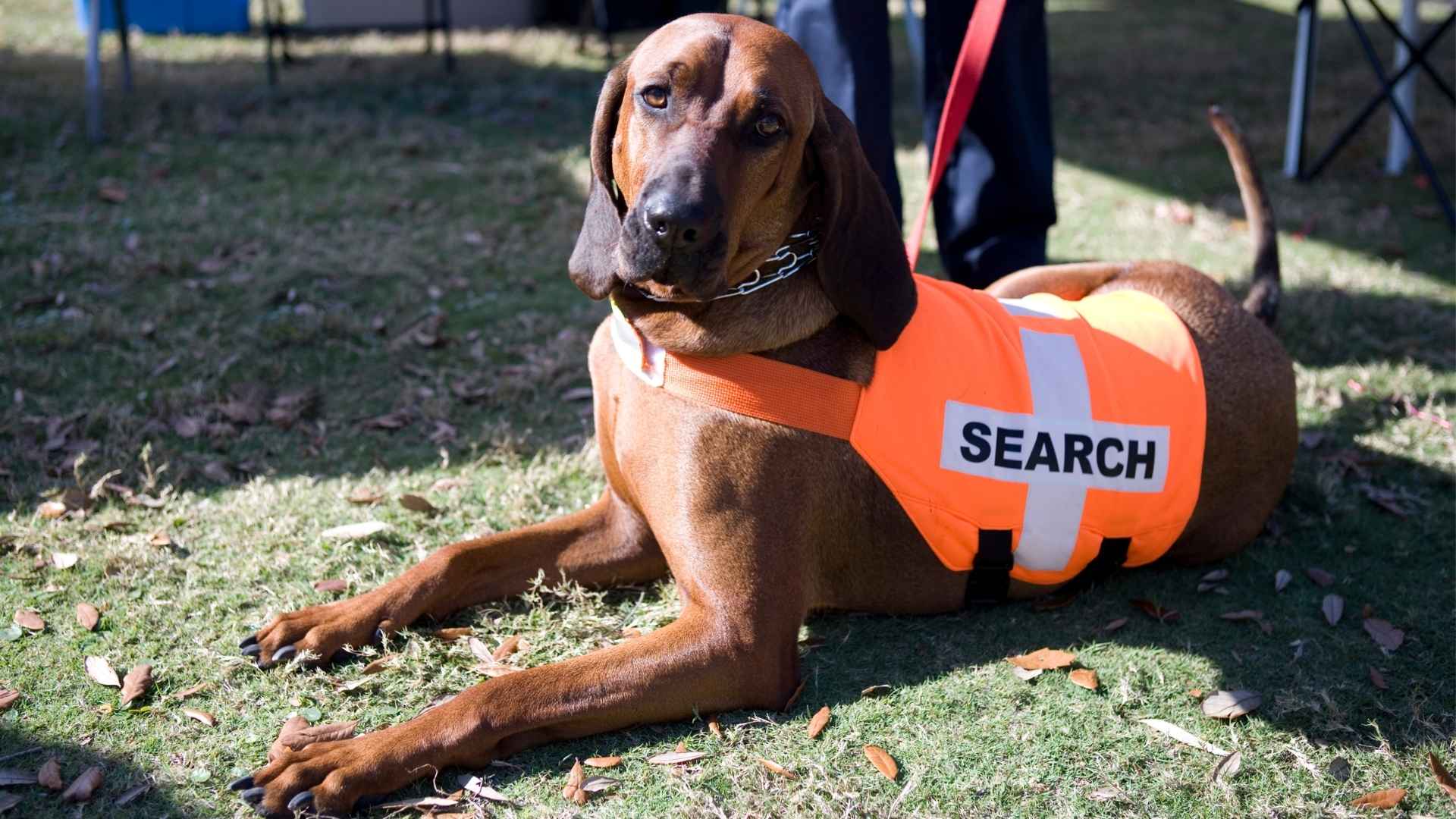When disaster strikes or someone goes missing, few allies are as dependable as a trained search and rescue dog. With their incredible sense of smell, boasting up to 220 million scent receptors compared to our modest five million, dogs are biologically built to locate people across challenging terrains and conditions. But while most dogs have impressive noses, not all breeds are equally equipped for the demanding world of search and rescue.
The most effective rescue dogs possess a powerful combination of traits: sharp scent detection, mental stamina, and an eagerness to work. They must stay focused amid chaos, remain calm in loud or crowded environments, and be social enough to collaborate with human teams. These canines don’t just follow commands, they thrive on them, displaying intelligence, physical endurance, and an unshakable drive to complete the mission at hand.
While hounds and sporting breeds often come to mind, many other types, sometimes unexpected, are making their mark in the field. Today, with many organizations broadening their criteria, any breed with the right temperament and abilities can become a life-saving search and rescue partner.
Dog Breeds Suitable For Search And Rescue
1. Basset Hound
Though often overshadowed by their Bloodhound cousins, Basset Hounds bring their own unique strengths to search and rescue efforts. With around 275 million scent receptors, far beyond a human’s capabilities, they’re still top-tier trackers, especially given their ability to sniff closer to the ground due to their short stature.
PetMD states that Basset Hounds are typically friendly and have a pleasant temperament. Their keen nose, coupled with a friendly disposition and an intelligent, trainable nature, makes them well-suited for roles where calm persistence and human interaction are just as important as scent detection.
Exercise
Despite their laid-back appearance, Basset Hounds require consistent daily exercise to stay in shape and mentally stimulated. About 30 to 60 minutes of moderate activity is ideal for maintaining their endurance and preventing the weight gain they’re prone to.
While they’re not the most athletic breed, their stamina and determination make them steady, if not speedy, partners in the field. Engaging their natural scenting instincts through playful or structured search tasks can also reinforce their working drive.
Fun Fact:
Basset Hounds are often used in therapy settings thanks to their calm demeanor and intuitive sense for comforting people in distress.
2. Newfoundland
The Newfoundland’s blend of strength, serenity, and natural lifesaving instincts makes it an exceptional candidate for search and rescue work, especially in aquatic environments. With a powerful build and water-resistant coat, these dogs excel in water rescues, thanks to their innate swimming ability and gentle mouth.
According to the AKC, the Newfoundland is loyal, gentle, and tolerant. Their calm, nurturing demeanor also proves invaluable in high-stress rescue situations, where a reassuring canine presence can make all the difference. Their loyalty and patience have long earned them the title of “nanny dog,” reflecting their protective and people-oriented nature.
Exercise
Despite their massive frame, Newfoundlands require only moderate but consistent physical activity to maintain their health and stamina. Around 30 minutes of daily exercise, whether through long walks or pulling a cart, helps keep them in shape and mentally engaged.
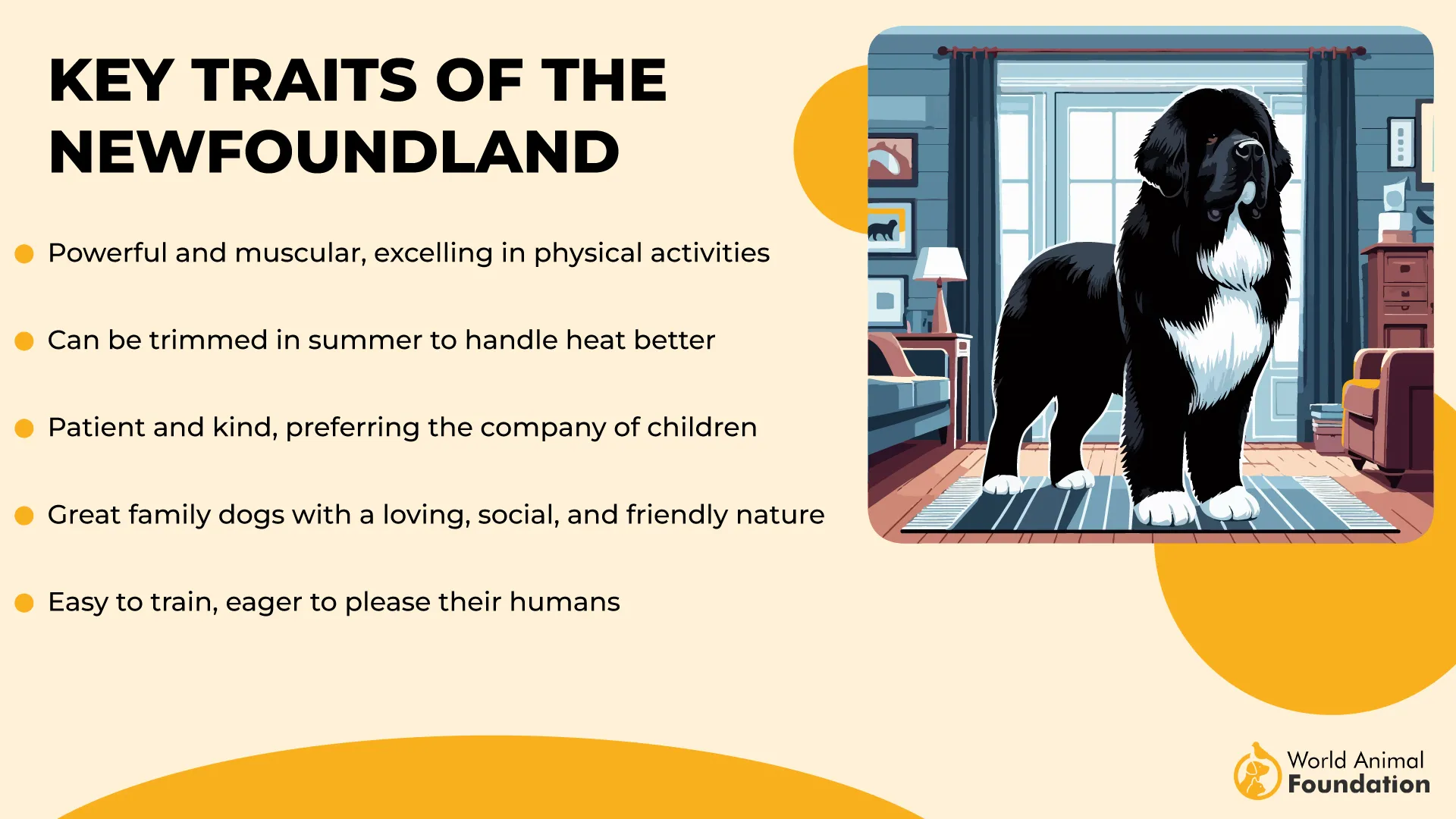
Their versatility also shines in dog sports like tracking, agility, and drafting. Though they thrive indoors with their families, these gentle giants appreciate outdoor adventures that cater to their working roots and love of water.
Fun Fact:
The Newfoundland isn’t just a swimmer; it has a long history as a natural water rescuer and is often used in lifesaving scenarios due to its strength and instinctive aquatic skills.
3. Bernese Mountain Dog
Originally bred for farm work in the Swiss Alps, these strong, intelligent dogs are built for endurance and multitasking. Their sturdy frame, standing up to 27 inches tall, and thick tricolored coat make them ideal for outdoor operations in colder climates.
Gentle by nature and deeply bonded to their humans, Berners often excel in emotionally charged rescue scenarios where composure and empathy are just as valuable as physical ability. Britannica states that due to its substantial size, the Bernese Mountain Dog needs a living space and transportation that offer ample room, avoiding tight or confined areas.
Exercise
Berners don’t require intense workouts but do thrive with about an hour of activity each day, preferably in cooler temperatures. Whether it’s swimming or games like tug and nose work, they enjoy interactive play that keeps both body and mind engaged.
They particularly excel in pulling activities, such as carting or even weight-pulling competitions, which tap into their natural strength and working heritage. These low-impact but functional exercises are perfect for maintaining the stamina needed in field work.
Fun Fact:
Aspen, a Bernese Mountain Dog, demonstrated such a calm and nurturing temperament as a puppy that she was trained to offer therapeutic support to military service members.
4. Bloodhound
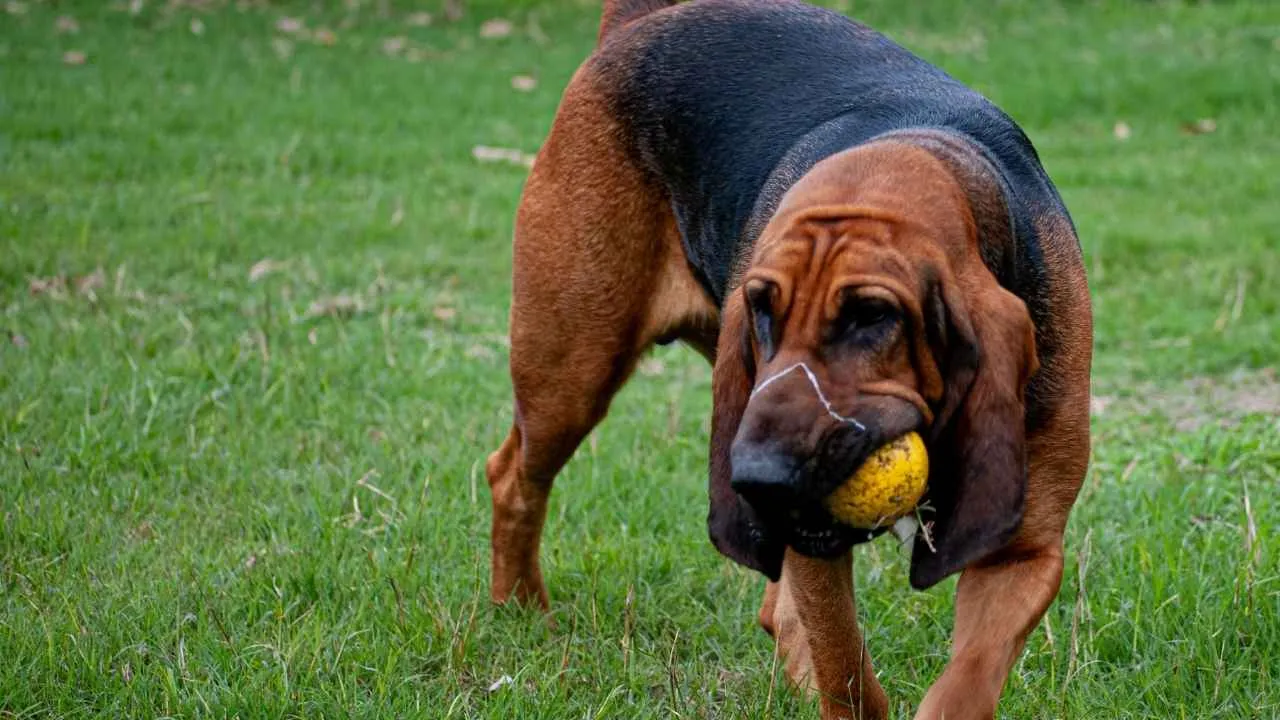
They are renowned for their unrivaled scenting ability. WebMD reports that Bloodhounds are a large dog breed well known for their exceptional sense of smell. With a nose so powerful it can follow trails days old, their skills are trusted by law enforcement and even hold up in court.
Historically bred to track game for European nobility, modern Bloodhounds continue this legacy by locating missing persons with remarkable precision. Their unwavering focus on scent makes them exceptional SAR partners, but it also means they can become easily distracted by odors during downtime, so vigilant supervision is key.
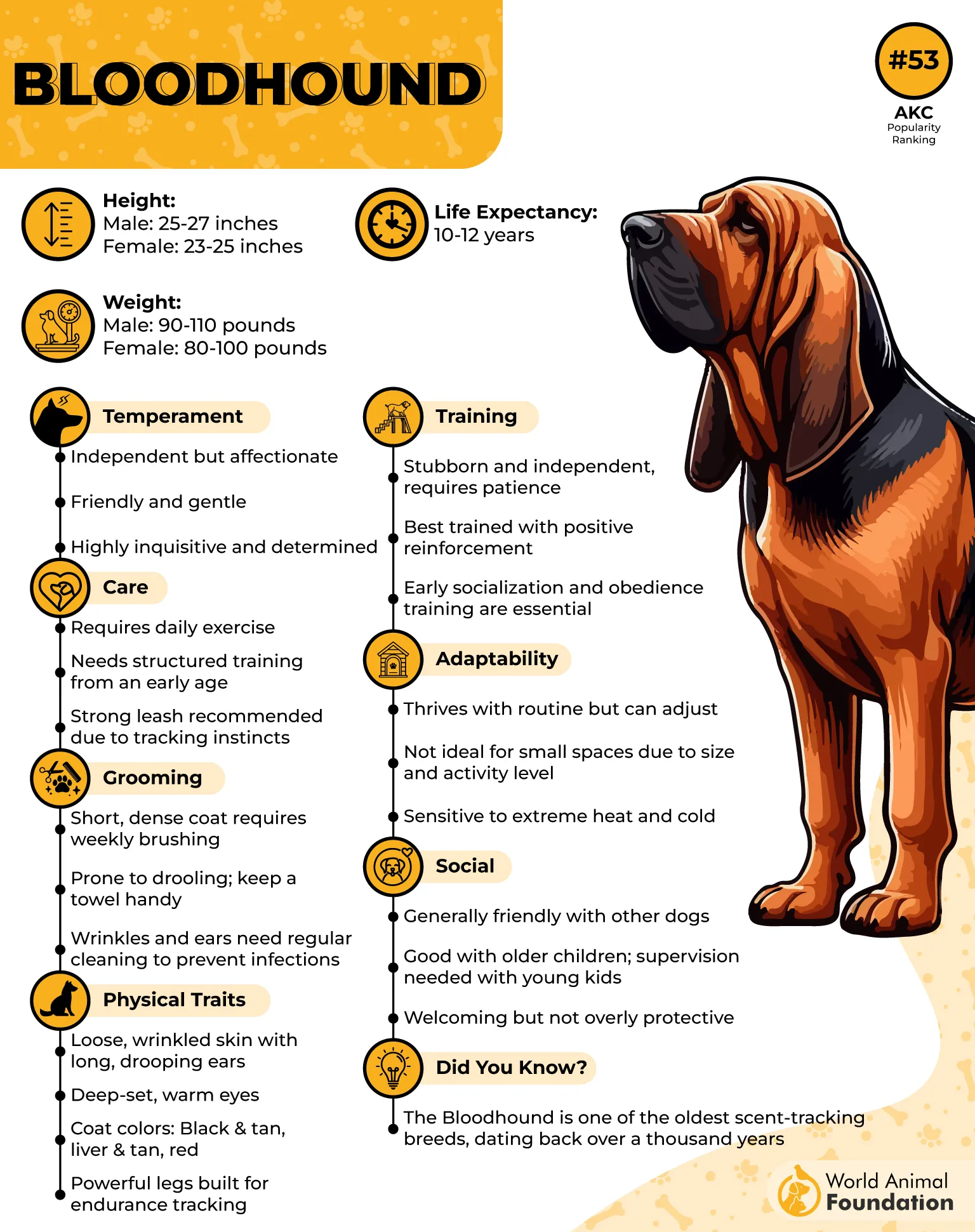
Exercise
To maintain their physical stamina and mental sharpness, Bloodhounds need consistent daily activity. Moderate exercise, such as sniff-based games or outdoor play, keeps them fit and prevents restlessness.
However, because of their strong instinct to track, they should always be kept on a leash or in a secure yard to avoid unintended adventures. Mental stimulation is just as important, and incorporating scent-based tasks into their routine helps satisfy their natural drive to work.
Fun Fact:
A Bloodhound’s tracking evidence is so reliable that it can be admitted in court, highlighting the breed’s extraordinary scenting credibility.
5. Bullmastiff
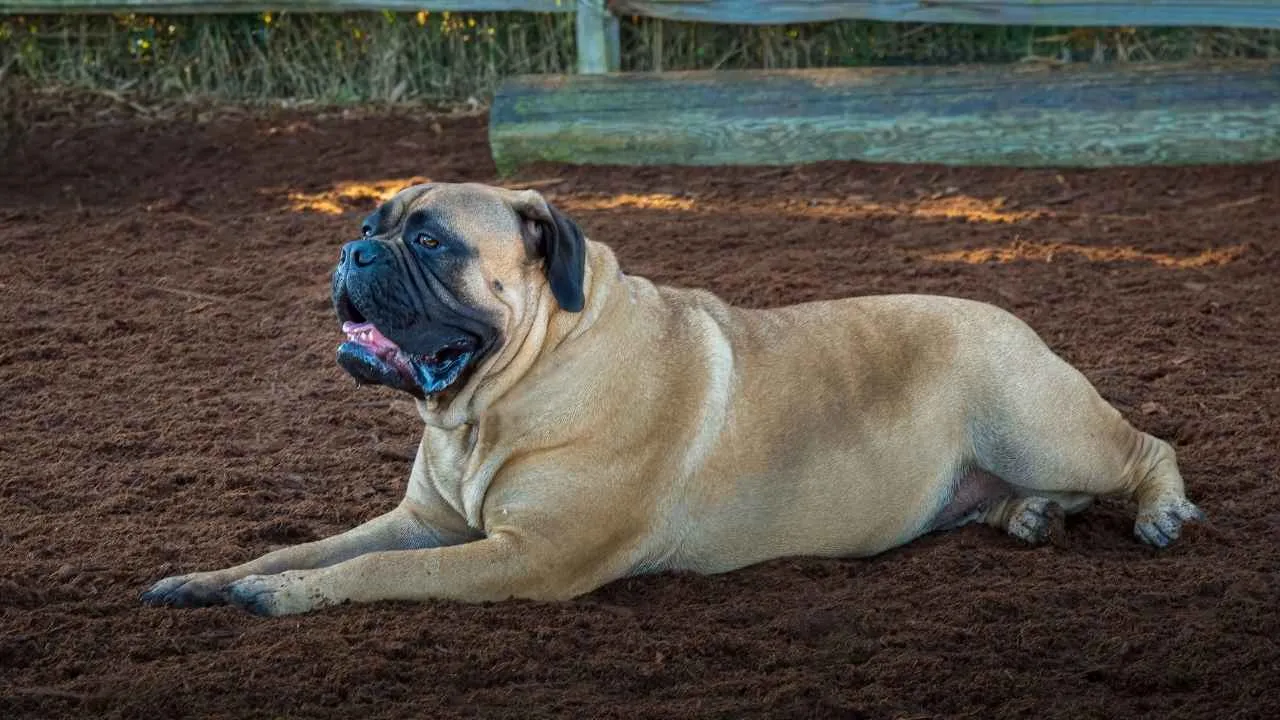
They have an impressive build and devoted temperament. Known for being intelligent, loyal, and highly protective, they remain calm under pressure and form strong bonds with their handlers. Their alert nature makes them excellent at monitoring environments, while their affectionate side helps in comforting victims.
Though independent at times, Bullmastiffs respond well to positive reinforcement and thrive when training is consistent and patient.
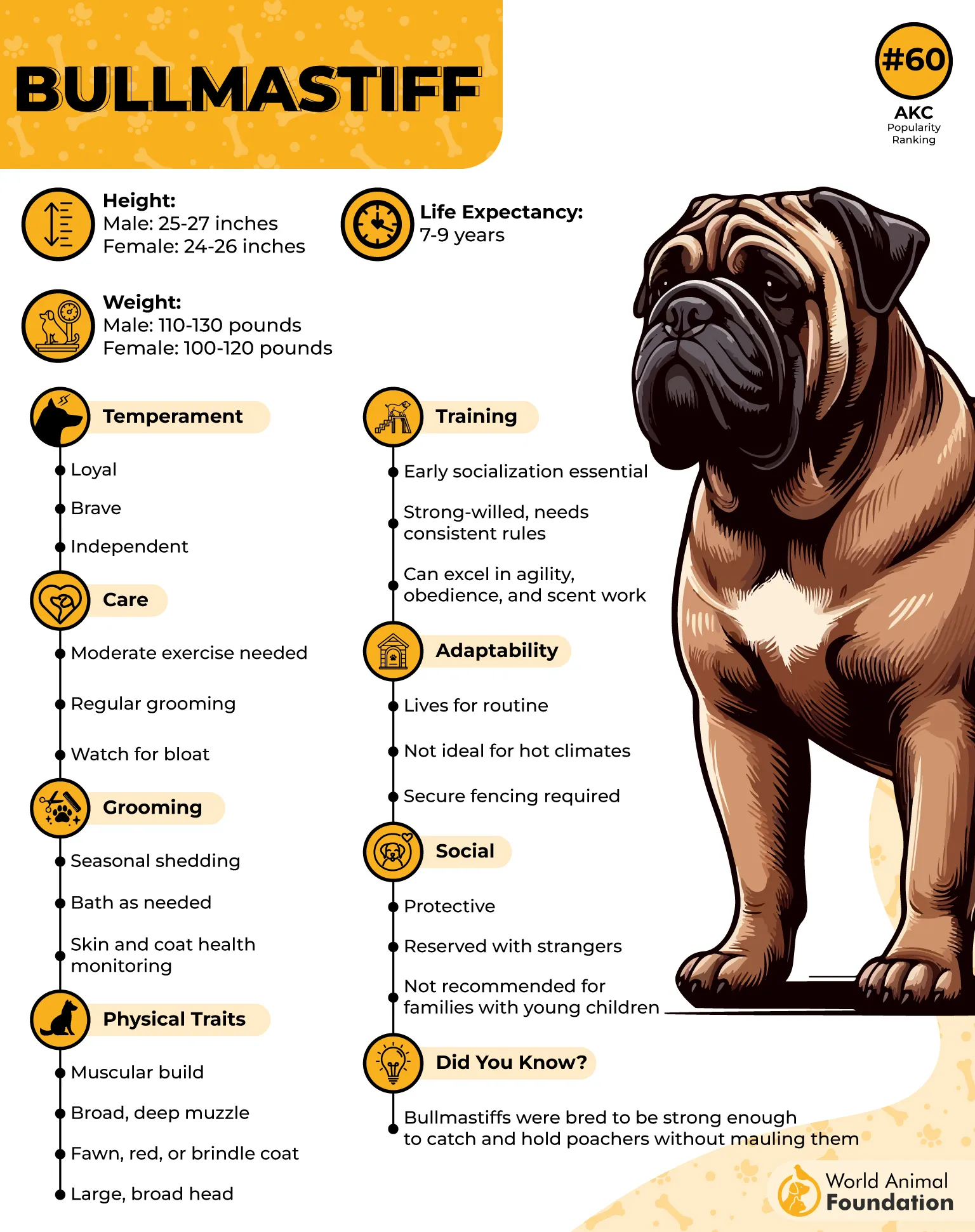
Exercise
Despite their size, Bullmastiffs don’t require overly strenuous workouts, but regular activity is essential for maintaining health and focus. Around an hour of daily movement, split between brisk walks and light play, is typically sufficient. They enjoy exploring new scents on walks and benefit from mentally stimulating tasks like obedience drills.
However, their short muzzle can make them susceptible to overheating, especially in warm conditions, so it’s best to schedule activity in cooler parts of the day. Avoid intense or prolonged exertion, particularly during summer months.
Fun Fact:
Bullmastiffs are powerful yet agile, typically weighing between 100 to 130 pounds and standing 24 to 27 inches tall, making them one of the most muscular and balanced large breeds.
6. American Staffordshire Terrier

The American Staffordshire Terriers, commonly known as AmStaffs, have a powerful build and loyal nature. Their confident demeanor, eagerness to learn, and strong work ethic make them capable of taking on physically demanding tasks, particularly those involving strength and endurance.
Known for their intelligence and steady temperament, AmStaffs thrive when given a clear job, making them ideal candidates for highly structured training environments.
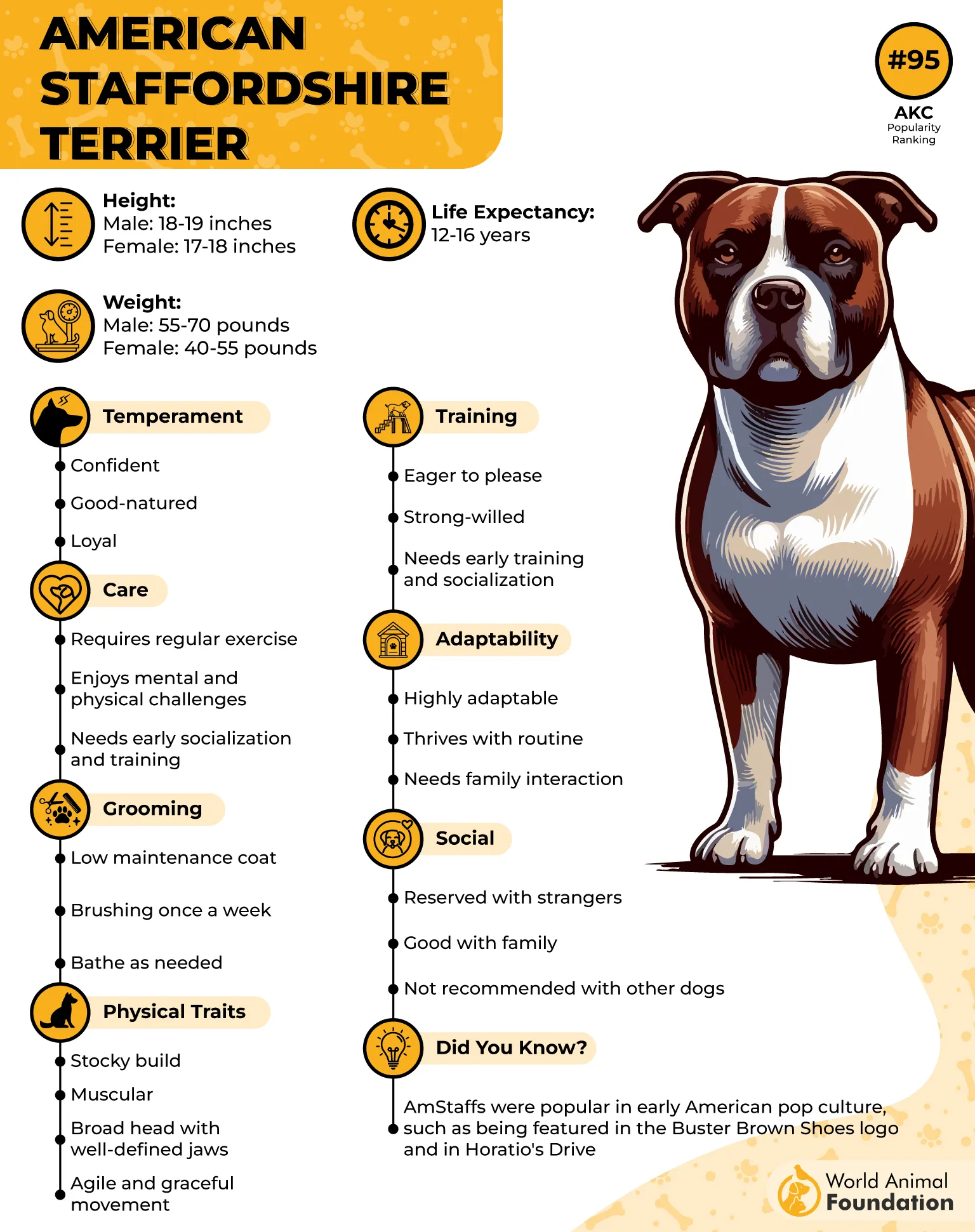
Exercise
This smart dog breed requires a consistent balance of physical and mental stimulation to stay healthy and focused. Daily activities such as agility exercises or puzzle-based games are crucial for maintaining their strength and drive.
Without adequate activity, AmStaffs may become bored or frustrated, which can hinder their training progress. Engaging routines not only help keep them in peak physical condition but also reinforce their attention and responsiveness, key traits in any successful rescue dog.
Fun Fact:
Although often misunderstood due to stereotypes, American Staffordshire Terriers have proven to be dependable service dogs, especially in mobility assistance roles, thanks to their strength and gentle loyalty.
7. Alaskan Malamute

Bred by the Malemiut people of Alaska, the Alaskan Malamute is a powerhouse of endurance and resilience. This robust breed boasts a thick double coat, broad head, and signature plume-like tail, allowing it to withstand frigid climates while maintaining strength and focus over long distances.
Loyal and intelligent, Malamutes have played key roles in hauling freight, exploring the Arctic, and, more recently, tracking missing persons in rugged, snowy terrains.
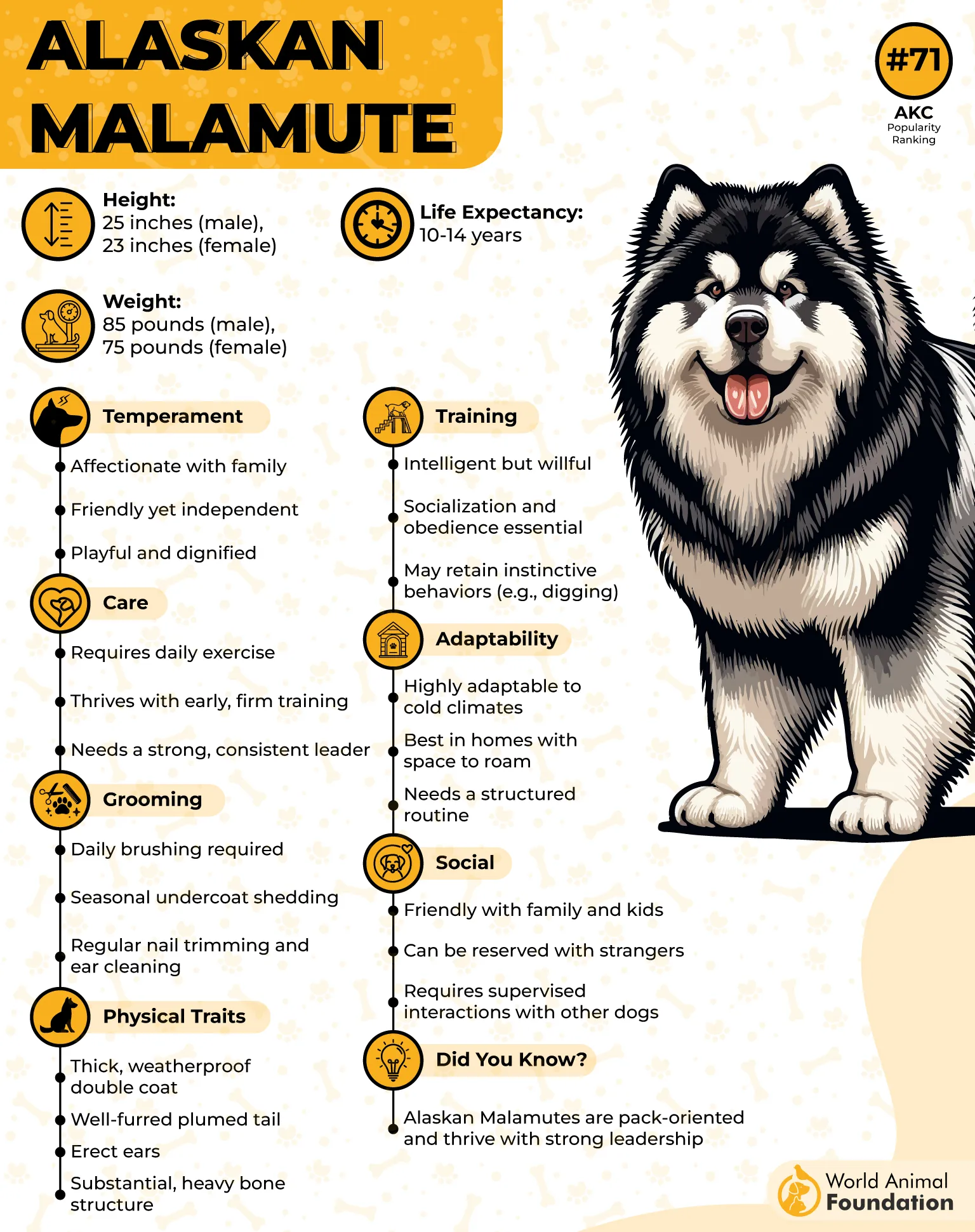
Exercise
Daily physical exertion is a must for this energetic breed. Alaskan Malamutes thrive on long walks or hikes and particularly enjoy vigorous activities like sledding and weight-pulling. Because of their strong prey drive and tendency to roam, it’s essential they exercise in secure areas or on leash.
Without consistent stimulation, both physical and mental, these dogs may become restless or destructive, so a structured routine is vital.
Fun Fact:
The Alaskan Malamute was a trusted companion of native Inuit and Eskimo tribes, bred specifically to haul heavy loads and survive the harsh Arctic wilderness.
8. Australian Shepherd
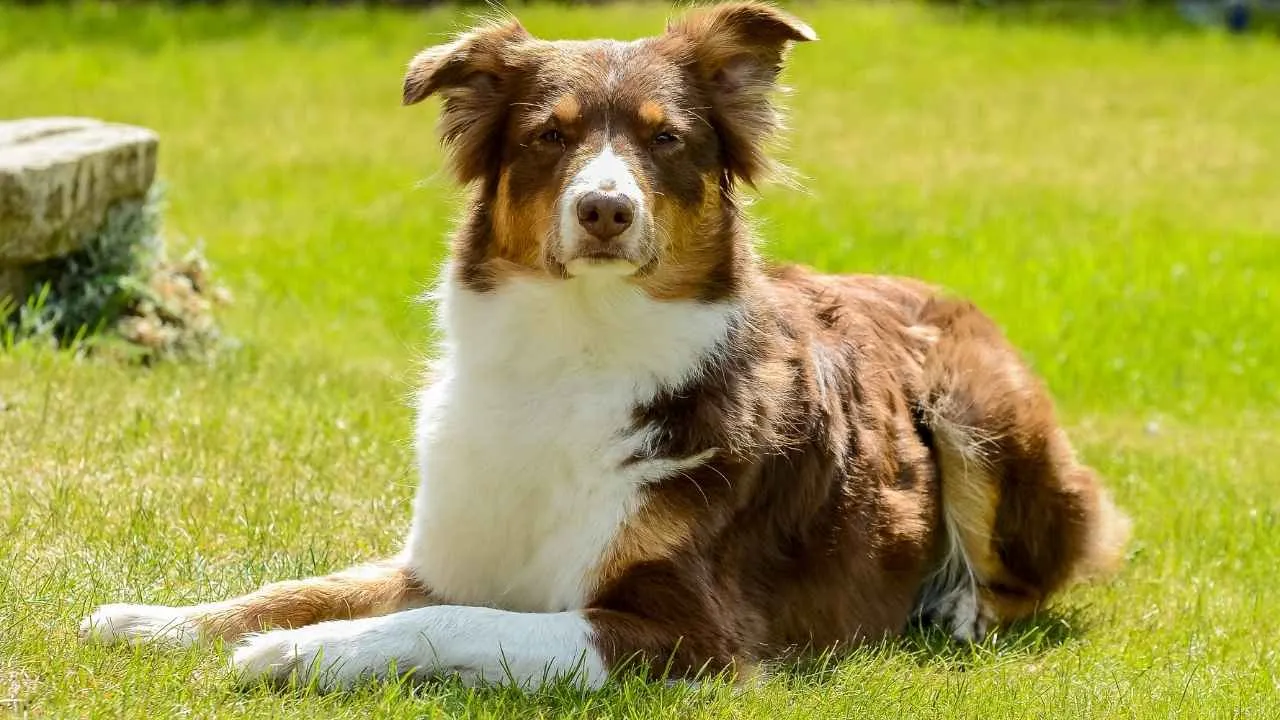
Their sharp minds, combined with exceptional trainability, allow them to master complex commands and tasks quickly. Aussies are known for their strong work ethic, loyalty, and versatility, qualities essential for high-pressure rescue scenarios.
Though their name suggests otherwise, the breed was developed in the United States from Spanish herding dogs, and they’ve since become renowned worldwide for their service capabilities.
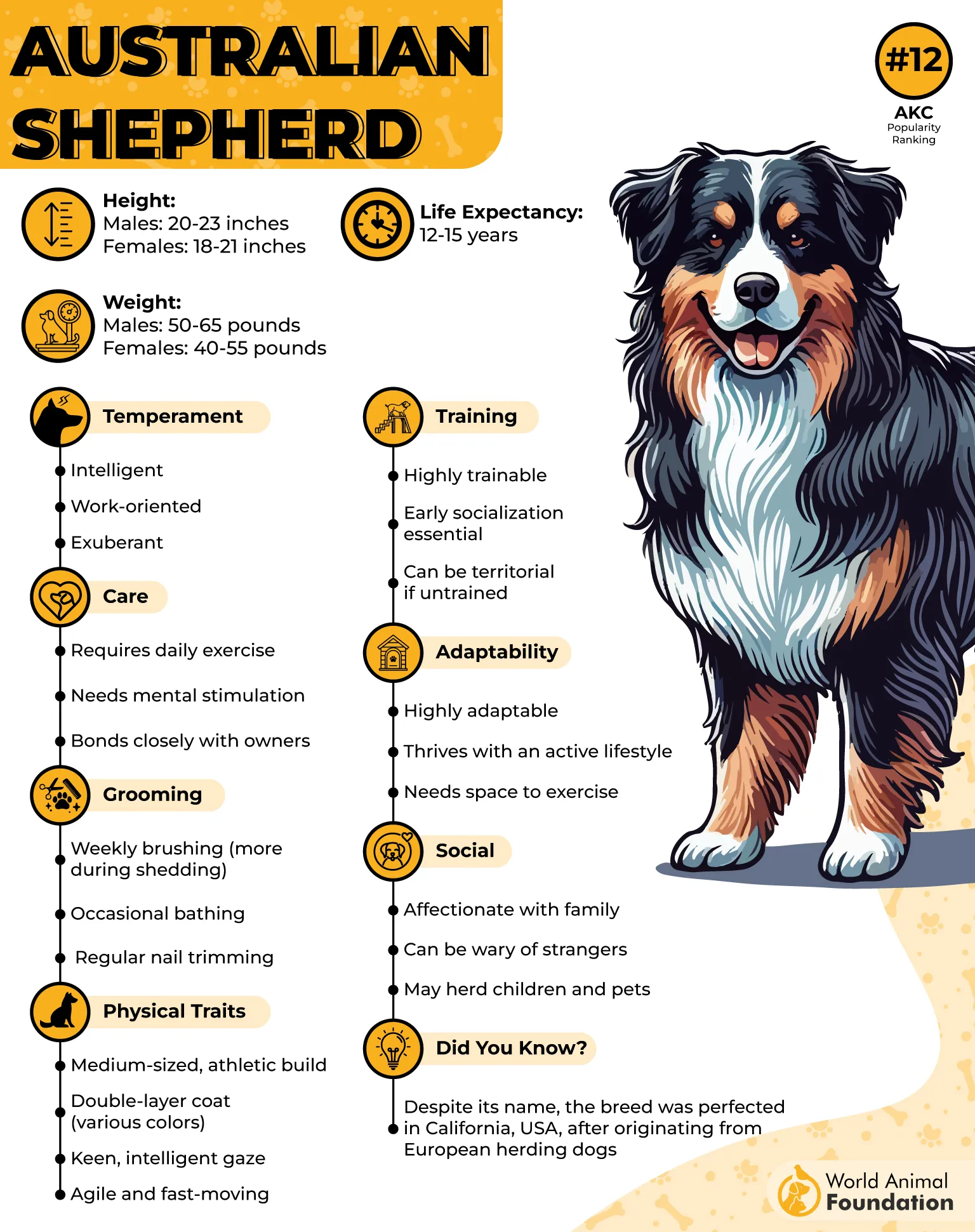
Exercise
If you’re considering an Aussie for search and rescue work, be prepared to match their intense energy. These dogs need at least two hours of daily exercise, ideally broken into off-leash runs in secure areas, and mentally stimulating games.
They excel in active pursuits like hiking and obedience training. Without sufficient physical and mental outlets, Australian Shepherds can become restless and vocal. Regular activity not only keeps them fit but also reinforces the focus and discipline crucial for rescue roles.
Fun Fact:
Some Australian Shepherds are born with two different colored eyes, or even two colors in a single eye, adding to their striking and unique appearance.
9. Labrador Retriever
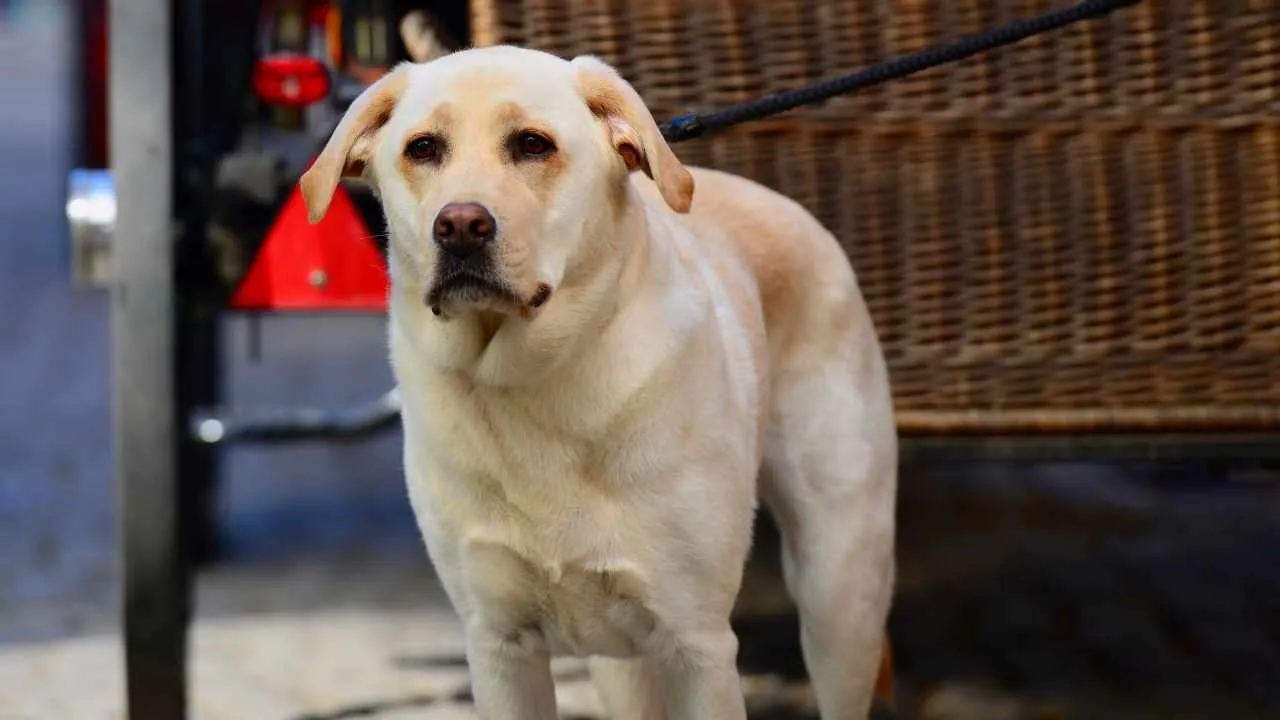
Labrador Retrievers have long held a reputation as dependable and intelligent working dogs. Their strong build, exceptional scenting ability, and natural enthusiasm make them the perfect right dog in various SAR scenarios, from tracking missing persons on land to navigating water or avalanche conditions.
Labs are eager to please and easy to train, which, paired with their loyal nature, makes them ideal partners in high-stakes rescue missions. Their short, waterproof double coat and love of the outdoors further support their adaptability in all kinds of weather and terrain.
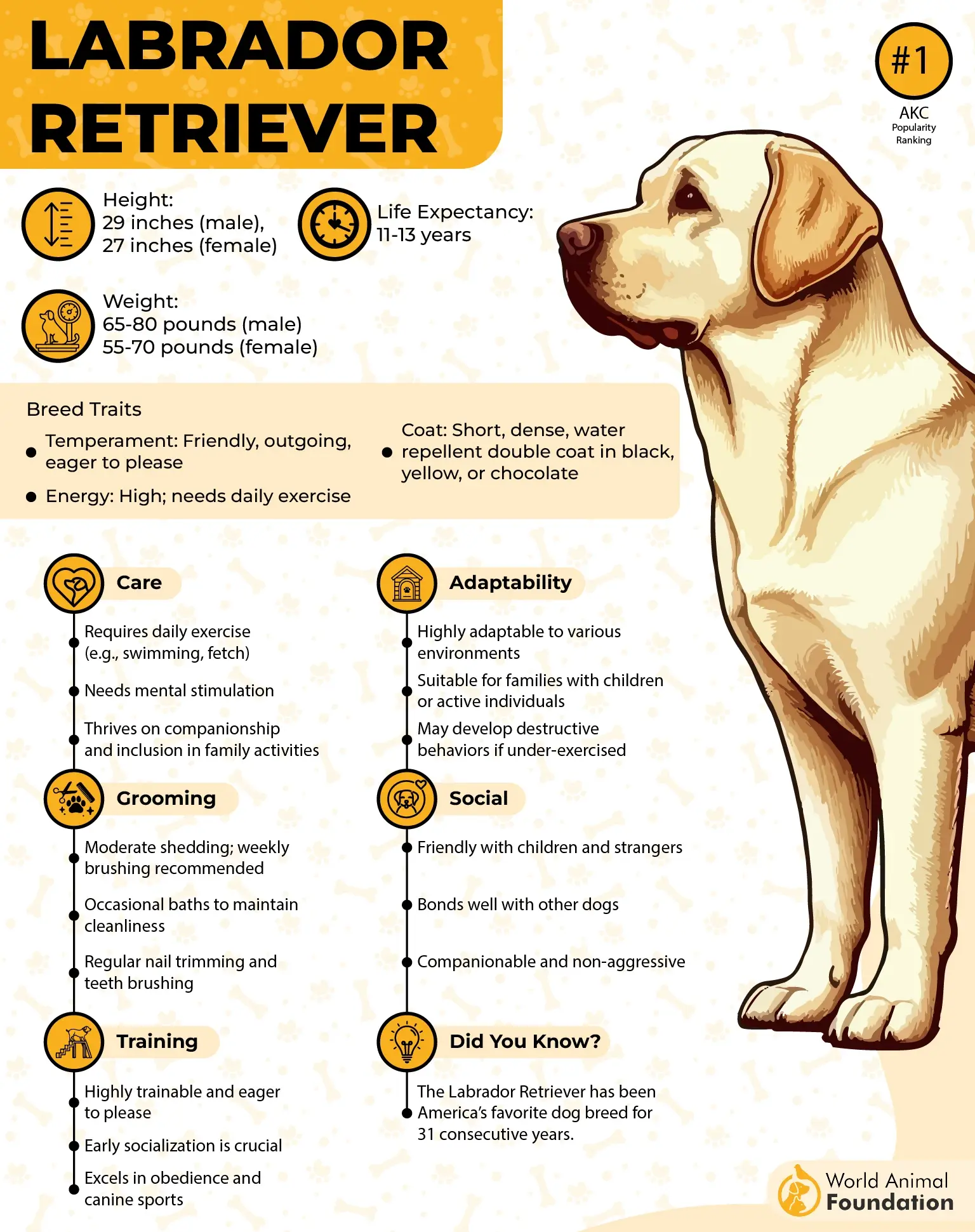
Exercise
With endless energy reserves, Labradors demand at least 1.5 hours of physical activity each day. Runs or outdoor adventures like swimming and hiking not only keep them physically fit but also mentally engaged.
These activities help channel their drive in productive ways, essential for breeds regularly deployed in demanding work. Labs love to stay busy, and regular exercise helps maintain their focus and stamina, both key in search and rescue roles.
Fun Fact:
The Labrador Retriever descends from the St. John’s water dog of Newfoundland, a breed renowned for its water skills and cooperative nature aboard fishing boats.
Conclusion
Search and rescue operations demand more than just a keen nose; only certain breeds possess the ideal mix of intelligence, stamina, and trainability needed for the job. Whether it’s the low-to-the-ground tracking finesse of a Basset Hound or the powerful endurance of an Alaskan Malamute, each dog brings a unique set of strengths to the field. These canines aren’t just strong workers; they’re emotionally resilient, adaptable, and eager to form close bonds with their handlers.
While specialized breeds like the German Shepherd, Belgian Malinois, and Border Collie are widely recognized for their contributions, other adult dog candidates, such as Golden Retrievers or even mixed breeds with the right traits, can excel in search and rescue with proper training. The key lies in selecting a dog with drive, discipline, and a desire to work. With dedication and guidance, many dogs, regardless of pedigree, can rise to the occasion and become life-saving heroes in the most critical moments.


